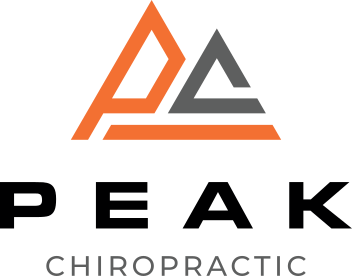When you're dealing with persistent back pain, understanding chiropractic adjustments can be a game changer. These targeted manipulations aim to realign your spine and relieve discomfort by addressing underlying issues like misaligned joints. You might wonder how such techniques work or what benefits they could bring to your overall wellness. As you explore this topic, you'll uncover the nuances of chiropractic care and what you can expect during your first visit—information that could make a significant difference in your path to relief.
What Are Chiropractic Adjustments?
Understanding chiropractic adjustments involves recognizing their purpose and technique. Chiropractic adjustments are specific manipulations of the spine and other joints aimed at improving alignment, mobility, and overall function. When you visit a chiropractor, they'll assess your body's alignment and identify any misalignments or restrictions that could be causing discomfort or pain.
These adjustments typically involve a quick, controlled force applied to a joint, often accompanied by a popping sound. This sound is the result of gas bubbles releasing from the joint, not something to be alarmed about. You might feel immediate relief or an improvement in your range of motion after an adjustment, though it's common to experience some soreness afterward, similar to what you'd feel after a workout.
Chiropractors believe that proper alignment of the spine is vital for peak health. When your spine is misaligned, it can affect your nervous system, leading to various health issues. By correcting these misalignments, chiropractors aim to restore balance, allowing your body to heal itself more effectively.
Chiropractic adjustments aren't just for back pain; they can also address headaches, neck pain, and joint issues. However, it's important to consult with a qualified chiropractor who can tailor the adjustments to your individual needs.
How Do Chiropractic Adjustments Work?
Chiropractic adjustments focus on spinal alignment techniques that help restore your body's natural balance.
When your spine is properly aligned, it can greatly improve how your nervous system functions.
This interaction between the spine and nervous system is key to enhancing your overall health and well-being.
Spinal Alignment Techniques
A well-aligned spine plays an essential role in your overall health, and spinal alignment techniques are designed to restore this balance. These techniques focus on adjusting the vertebrae to reduce pain and improve function.
By realigning your spine, you can experience a variety of benefits, including:
- Reduced back pain and discomfort
- Improved posture and alignment
- Enhanced mobility and flexibility
- Increased energy levels
- Better overall body function
Chiropractors use various methods to achieve spinal alignment, such as manual adjustments, specialized instruments, or even gentle techniques for those who may be sensitive to pressure.
Each technique targets specific areas of the spine, allowing you to regain your range of motion and alleviate tension.
As you receive these adjustments, your chiropractor closely monitors your progress, ensuring that your spine stays aligned over time. They may also recommend exercises and stretches to maintain this alignment between visits.
By embracing spinal alignment techniques, you're taking a proactive step toward a healthier spine, which can lead to improved overall well-being.
Nervous System Interaction
When your spine is properly aligned, it positively impacts your nervous system, enhancing communication between your brain and body. Chiropractic adjustments focus on correcting misalignments, or subluxations, that can interfere with this communication. These misalignments often create pressure on nerves, leading to pain, discomfort, and various health issues.
By realigning your spine, chiropractors help restore normal function to your nervous system. This restoration allows your brain to send and receive signals more effectively, promoting better coordination and overall health. You might notice improvements not just in back pain, but also in related symptoms like headaches, fatigue, and stress.
During an adjustment, your chiropractor applies controlled force to specific joints. This action encourages realignment and reduces pressure on surrounding nerves. As a result, you may experience immediate relief, but the long-term benefits often come from consistent adjustments that support your body's natural healing process.
In essence, chiropractic care is about more than just alleviating pain; it's about optimizing your nervous system's function. When your nervous system operates efficiently, you're more likely to enjoy better health and wellness in your daily life.
Techniques Used in Chiropractic Care
When it comes to chiropractic care, you'll encounter various techniques tailored to your needs.
Manual adjustment techniques, instrument-assisted adjustments, and soft tissue therapy are just a few methods that chiropractors use to help you feel better.
Understanding these approaches can empower you to make informed decisions about your treatment.
Manual Adjustment Techniques
Utilizing a variety of manual adjustment techniques, chiropractors aim to restore proper alignment and function to the spine and other joints.
These techniques are designed to relieve pain, improve mobility, and enhance overall wellness.
Here are some common manual adjustment methods you might encounter during your chiropractic sessions:
- Diversified Technique: This involves high-velocity, low-amplitude thrusts to realign joints quickly.
- Activator Method: Using a small, handheld device, this technique applies a gentle force to specific points.
- Gonstead Technique: Focused on the entire spine, this method emphasizes precise adjustments based on detailed analysis of spinal structure.
- Thompson Technique: This utilizes a specialized table with drop pieces, allowing for a quick and effective adjustment.
- Flexion-Distraction Technique: Here, the chiropractor gently stretches the spine to relieve pressure on discs and nerves.
Instrument-Assisted Adjustments
Chiropractors often incorporate instrument-assisted adjustments to enhance their manual techniques and provide a more precise treatment. These adjustments utilize specialized tools, like the Activator or the Impulse Adjustment Instrument, designed to deliver controlled, gentle force to specific areas of your spine or joints. This method can be particularly beneficial for those who may feel discomfort with traditional manual adjustments.
When you undergo an instrument-assisted adjustment, you might notice that the process feels different but still effective. The instruments allow chiropractors to target specific areas with accuracy, minimizing the potential for any discomfort. You'll likely find that these adjustments can help improve joint mobility and reduce pain while being less invasive than traditional methods.
Moreover, instrument-assisted adjustments can be tailored to your unique needs. Your chiropractor will assess your condition and decide the best approach for your care. This technique is especially useful for patients with chronic pain or those who prefer a gentler treatment option.
Soft Tissue Therapy
Soft tissue therapy is frequently used in chiropractic care to address muscle tension, improve circulation, and enhance overall function. This approach complements spinal adjustments by targeting the muscles, fascia, and tendons surrounding the spine.
You might find these techniques beneficial for relieving pain and restoring mobility.
Here are some common soft tissue therapy techniques you could experience:
- Massage Therapy: Involves kneading and manipulating soft tissues to reduce tension.
- Trigger Point Therapy: Focuses on specific tight spots in muscles that cause pain in other areas.
- Myofascial Release: Targets the fascia, the connective tissue that supports muscles, to relieve restrictions.
- Stretching Exercises: Helps improve flexibility and range of motion, reducing muscle stiffness.
- Active Release Techniques (ART): Combines stretching and pressure to release tight muscles and improve function.
Incorporating these techniques into your chiropractic treatment can help accelerate recovery and promote overall wellness.
Benefits of Chiropractic Adjustments
Chiropractic adjustments offer a range of benefits that can enhance your overall well-being. These adjustments focus on realigning your spine and improving the function of your nervous system, which plays an essential role in your body's overall health. When your spine is properly aligned, it can greatly reduce pain and discomfort, especially in your back and neck.
You may notice improved mobility and flexibility after receiving chiropractic care. By addressing misalignments, you can regain full range of motion in your joints, making everyday activities more comfortable. This increased mobility not only helps with physical tasks but also promotes a more active lifestyle, which is crucial for your overall health.
Another key benefit is the reduction of tension and stress. Many people carry tension in their muscles, especially around the neck and shoulders. Chiropractic adjustments can alleviate this tension, leading to a greater sense of relaxation and well-being. You might even find that your sleep improves as your body becomes less tense and more relaxed.
Moreover, chiropractic adjustments can improve your posture. Poor posture can lead to a host of issues, including chronic pain and decreased confidence. Regular adjustments help you maintain proper alignment, which can enhance your posture and overall appearance.
Finally, chiropractic care often promotes better overall health by optimizing your nervous system function. You may find yourself experiencing fewer headaches, improved digestion, and a stronger immune response.
In short, chiropractic adjustments not only address pain but can also contribute to a healthier, more balanced life.
What to Expect During a Visit
During a visit, you can typically expect a thorough assessment of your condition. Your chiropractor will begin by asking about your medical history, current symptoms, and any previous treatments. This helps them understand your unique situation and tailor their approach to your needs.
Here's what you can anticipate during your appointment:
- Detailed Consultation: You'll discuss your symptoms in depth, including when they began and how they've changed over time.
- Physical Examination: The chiropractor will perform a physical exam, which may include checking your posture, range of motion, and any areas of tenderness or discomfort.
- Diagnostic Tests: If necessary, they might recommend X-rays or other imaging to get a clearer picture of your spine and overall health.
- Treatment Plan Discussion: Based on your assessment, your chiropractor will outline a personalized treatment plan, explaining what adjustments or therapies they recommend.
- Chiropractic Adjustment: You'll likely receive an adjustment during your first visit, which involves gentle manipulation of your spine to improve alignment and relieve pain.
Throughout your visit, the chiropractor will encourage you to ask questions and express any concerns. It's important to feel comfortable and informed about the process.
Considerations for Chiropractic Treatment
When contemplating chiropractic treatment, it's vital to evaluate your specific health needs and expectations. A thorough assessment of your condition will help you determine whether chiropractic care is the right choice for you. Start by consulting with a qualified chiropractor who can review your medical history and perform a physical examination. This step is significant as it allows the chiropractor to identify the underlying causes of your back pain.
Next, reflect on your treatment goals. Are you seeking immediate relief from pain, or are you aiming for long-term wellness? Understanding your objectives will guide the type of chiropractic adjustments and additional therapies that might be recommended. Be open about your lifestyle and activities, as this information can influence your treatment plan.
It is also important to take into account your comfort level with chiropractic techniques. Some people prefer gentle adjustments, while others may be open to more vigorous methods. Discuss these preferences with your chiropractor to ascertain you're both on the same page.
Finally, keep in mind that chiropractic care is often most effective when combined with other health practices, like physical therapy or exercise. This holistic approach not only addresses your back pain but also promotes overall well-being.
Conclusion
To sum up, chiropractic adjustments can be a powerful tool for managing back pain and enhancing your overall well-being. By realigning your spine and reducing nerve pressure, these adjustments promote better communication between your brain and body. Whether you're seeking immediate relief or long-term wellness, understanding the techniques and benefits can help you make informed decisions about your care. So, if you're considering chiropractic treatment, know that it could be a significant step towards a healthier you.



